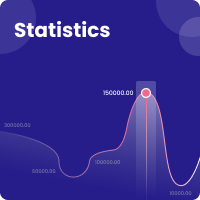Exploratorio: a citizen laboratory in Medellín, Colombia
Abstract
This article is a characterization of Exploratorio, a hybrid space between citizen laboratory and public experimentation workshop in the city of Medellin. For this purpose, five (5) aspects were considered: Definition, Context, Audiences, Activities and Methods. The first aspect describes the place and presents its main influences. The second one is about its geographical location and social position. The third one presents both the audience that designs the activities and the attending audience. The fourth one summarizes the main activities that are carried out. The fifth one explores the methods that were adopted. Finally, the article ends with five (5) general conclusions.
References
Alcaldía de Medellín (2014). Acuerdo N° 48. Recuperado de https://www.medellin.gov.co/irj/go/km/docs/pccdesign/SubportaldelCiudadano_2/PlandeDesarrollo_0_17/ProgramasyProyectos/Shared%20Content/Documentos/2014/POT/Gaceta4267ACUERDO48POTinternet.pdf
Ballon, P.; Pierson, J. y Delaere, S. (2005). Test and Experimentation Platforms for Broadband Innovation: Examining European Practice. SSRN Electronic Journal. https://doi.org/10.2139/ssrn.1331557
Bergvall-Kåreborn, B.; Ihlström-Eriksson, C.; Ståhlbröst, A. y Svensson, J. (2009). A milieu for innovation–defining living labs. En 2nd ISPIM Innovation Symposium, New York. Recuperado de http://www.researchgate.net/profile/Anna_Stahlbroest/publication/228676111_A_Milieu_for_Innovation-Defining_Living_Labs/links/0c960517b9dd19aad3000000.pdf
Corsín, A. (2014). Introduction: The prototype: more than many and less than one. Journal of Cultural Economy, 7(4), 381–398. https://doi.org/10.1080/17530350.2013.858059
Eriksson, M.; Niitamo, V. y Kulkki, S. (2005, Diciembre). State-of-the-art in utilizing Living Labs approach to user-centric ICT innovation-a European approach. Lulea: Center for Distance-spanning Technology. Lulea University of Technology Sweden: Lulea., 1–13. Recuperado a partir de http://www.vinnova.se/upload/dokument/verksamhet/tita/stateoftheart_livinglabs_eriksson2005.pdf
Fernández-González, M. (2015). La smart city como imaginario socio-tecnológico. La construcción de la utopía urbana digital. Universidad del País Vasco, España. Recuperado de http://es.slideshare.net/manuederra/la-smart-city-como-imaginario-sociotecnolgico-phd
Finholt, T. A. (2005). Collaboratories. Annual Review of Information Science and Technology, 36(1), 73–107. https://doi.org/10.1002/aris.1440360103
Fonseca, A. D. (2011). Educación expandida y cultura digital. Una exploración de proyectos tecnosociales en Colombia. Hallazgos, 8(15), 71–90. https://doi.org/http://dx.doi.org/10.15332/s1794-3841.2011.0015.04
Fox, S. (2014). Third Wave Do-It-Yourself (DIY): Potential for prosumption, innovation, and entrepreneurship by local populations in regions without industrial manufacturing infrastructure. Technology in Society, 39, 18–30. https://doi.org/10.1016/j.techsoc.2014.07.001
Gallardo, L. (2013). Mapeo colaborativo del Aprendizaje Social Abierto. Construyendo caminos alternativos. UNED, España. Recuperado de http://e-spacio.uned.es/fez/eserv.php?pid=bibliuned:masterComEdred-Lgallardo&dsID=Documento.pdf
Gelber, S. M. (1997). Do-It-Yourself: Constructing, Repairing and Maintaining Domestic Masculinity. American Quarterly, 49(1), 66–112.
Himanen, P. (2004). La ética del hacker y el espíritu de la era de la información. Barcelona: Destino.
Homs, M. I. (1999). Ámbitos de intervención en educación no formal: una propuesta taxonómica. Teoría de la Educación, 11, 183–215.
Homs, M. I. (2007). Reflexiones en torno a algunas propuestas de caracterización genérica de la educación no formal. Bordón. Revista de pedagogía, 59(4), 659–672.
Jaramillo-Vélez, A. M. y Duque, A. (Eds.). (2012). labSurlab + Co•operaciones. Medellín: La Especial. Recuperado de https://milinviernos.com/2013/01/31/co%C2%B7operaciones-libro-para-descarga-de-labsurlab/
Lafuente, A. (2016). Los imaginarios del laboratorio (ciudadano). Recuperado de https://www.academia.edu/29114688/Los_imaginarios_del_Laboratorio_ciudadano_
Leminen, S. (2015). What Are Living Labs? Technology Innovation Management Review, 5(9), 29–35. Recuperado de http://timreview.ca/article/928
Lessig, L. (2005). Por una cultura libre. Cómo los grandes grupos de comunicación utilizan la tecnología y la ley para clausurar la cultura y controlar la creatividad. (A. Córdoba/elastico.net, Trad.). Madrid: Traficantes de Sueños.
Muff, K. (Ed.). (2014). The collaboratory: a co-creative stakeholder engagement process for solving complex problems. Sheffield: Greenleaf Publishing.
Pallasmaa, J. (2014). La mano que piensa. Sabiduría existencial y corporal en la arquitectura. (M. Puente, Trad.) (Versión de Kindle). Barcelona: Gustavo Gili.
Rojas, A. y Bejarano, J. (Eds.). (2014). MedeLab, laboratorios creativos en red. Medellín: El Puerto. Recuperado de http://issuu.com/elpuertomammpublicaciones/docs/medelab2013
Schiavo, E. y Serra, A. (2013). Presentación: Laboratorios ciudadanos e innovación abierta en los sistemas CTS del siglo XXI. Una mirada desde Iberoamérica. Revista CTS, 8(23), 115–121.
Sennett, R. (2009). El artesano. Barcelona: Anagrama.Stallman, R. M. (2004). Software libre para una sociedad libre. Madrid: Traficantes de Sueños.
Trilla-Bernet, J., Gros-Salvat, B., López-Palma, F. y Martín-García, M. J. (1998). La educación fuera de la escuela. Ámbitos no formales y educación social. Barcelona: Ariel.
UNESCO. (2005). Hacia las sociedades del conocimiento. París, Francia: UNESCO.
Uribe-Zapata, A. (2017). Una revisión de prácticas educativas expandidas de la ciudad de Medellín. Rev. Guillermo de Ockham, 15(1), En prensa. https://doi.org/http://dx.doi.org/10.21500/22563202.2757
Watson, M. (2012). Do-it-Yourself. En International Encyclopedia of Housing and Home (pp. 371–375). Elsevier.
Westerlund, M. y Leminen, S. (2011). Managing the Challenge of Becoming an Open Innovation Company: Experiences from Living Labs. Technology Innovation Management Review, 1(1), 19–25. Recuperado de http://timreview.ca/article/489
Wohlfeil, N. (2014). Disenchantment 2.0. A Critical Review of Do-It-Yourself Agency, Urban Locality and Tangibility in the Post-Digital Theory (Master of Arts). University of Amsterdam, New Media and Digital Culture. Recuperado de http://dare.uva.nl/document/544391
Wulf, W. (1993). The collaboratory opportunity. Science, 261(5123), 854–855. https://doi.org/10.1126/science.8346438










